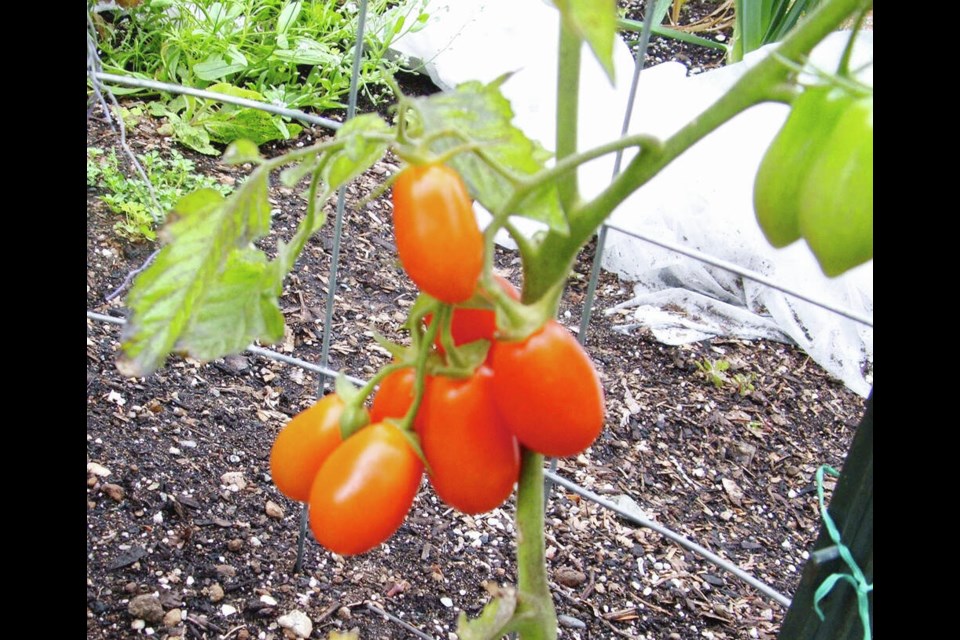Again last spring, a major breeder and producer of seed-grown flowers and vegetables sent me a shipment of transplants grown from seeds to be released onto the market in the following year.
Selected garden writers are invited to grow, monitor and assess the varieties sent to them and pass along their findings.
In the previous spring (2022), one of the transplants sent to me is a variety that has become a star in my garden. Sun Dipper’s slim vines produce beautiful strings of small, elongated tomatoes with a rich, sweet flavour. This tomato quickly became a favourite among family and friends invited to taste it. One of those friends even found Sun Dipper transplants in a local nursery last spring — unusual for an entirely new variety. Seeds are available from William Dam Seeds and Stokes Seeds
Among last year’s preview of seed-grown plants to be released this year, the most exuberantly bright and showy was the first Petchoa grown from seed. Petchoa, a petunia-calibrachoa cross, takes the best, most vibrant colours from calibrachoas and joins them to the growing habit and flower size of petunia.
Petchoa Caliburst Yellow is a neatly spreading plant ideal for hanging baskets and other containers. The sturdy little plants that I received, transplanted in May into a funky old metal washtub at the gate into the back garden, quickly filled the tub and spilled nicely over its edges to create a large splash of sunny yellow and soft, lemony cream to light up that garden corner.
The cheery display persisted through a rather punishing summer in a garden hot spot. By the end of August, though a bit of flagging had begun, the plants remained flower-filled and attractive.
Petchoa Caliburst Yellow seed is available from William Dam and Stokes.
The same two seed sources list another new release, a coleus in the Premium Series called Sun Coral Candy. My plant grew impressively bushy in its container, producing varying foliage hues through the season on a coral-pink, violet-veined theme, the leaf colours melding to a rosy green at the serrated edges.
Stokes seeds lists a new variety in the Dragon Wing Series of begonia. My trial plant of Dragon Wing Red with Bronze Leaf grew to become an increasingly imposing sight over the summer in its container as large, deep apricot blooms hung down from arching stems bearing glossy, bronze-tinged, deep green leaves.
This begonia proved remarkably hardy. With the arrival of autumn, I noticed that the plant did not appear to be flagging. I continued to monitor it through the fall and was surprised that the stems still held on to foliage and a few flowers into mid-December. That extended season of ornamental value can probably be attributed to the unusually warm December weather.
Ducky potato. One of the perks of this job is regular correspondence with readers. Often, people accompany their written observations with photos of an interesting scene or plant in their gardens.
Over the years I’ve received several photos of what could be termed “rude” vegetables, such as distorted carrots and tomatoes with rather suggestive protrusions.
A few years ago a reader shared a photo of a potato shaped like a sitting Buddha. Most recently, Danica sent in a photo of a potato her husband grew last year. “It looks like a duck.”
Danica’s duck-potato piqued my curiosity: Why do these root vegetables deviate from a smooth, regular shape to contort themselves into odd, sometimes amusing, formations?
It turns out that, as with many current challenging issues in our gardens, the cause is most likely difficult weather conditions causing environmental stress to plants.
Lat year’s long period of drought made it hard, especially in gardens with open-textured, fast-draining soils, to keep the soil adequately and consistently moist. The natural development of potato tubers can be hampered by drought and high soil temperatures.
Climate experts are expecting that this coming summer will be even hotter than last year. There is much that we can do to mediate the effects of extreme weather conditions on our plantings.
A compost-plumped, humus-rich, moisture retentive soil, regular watering, soil-cooling mulches of leaves or straw, and shade cloth all contribute to our ability to continue growing healthy, productive gardens in the face of summer weather extremes.



